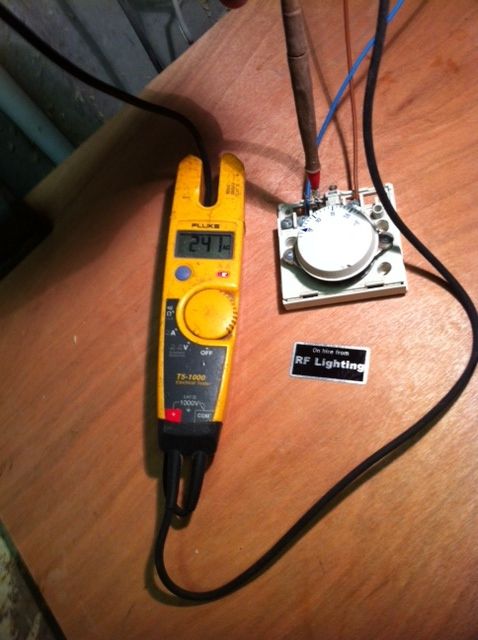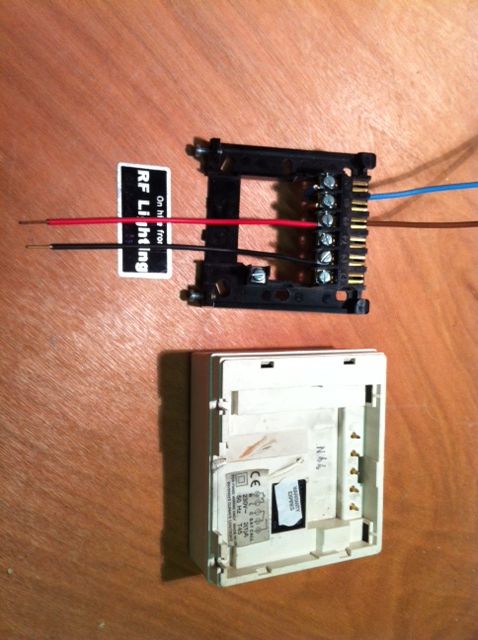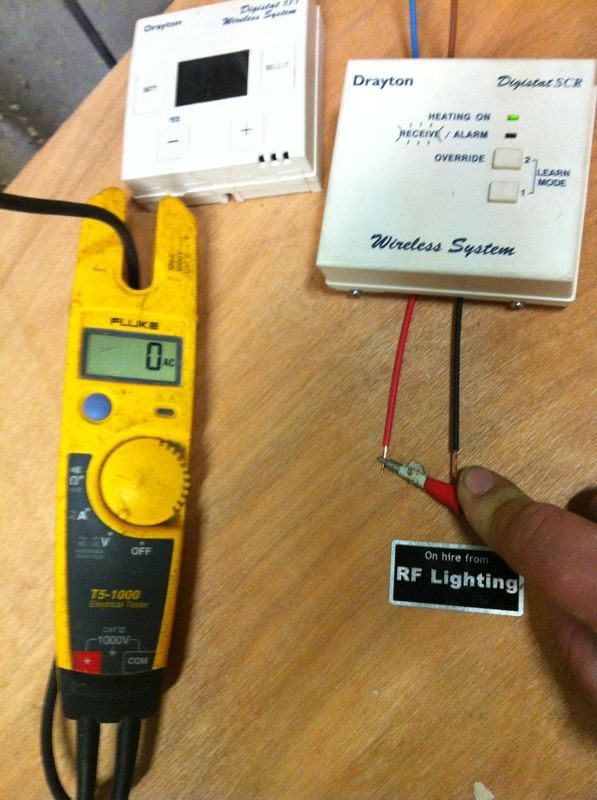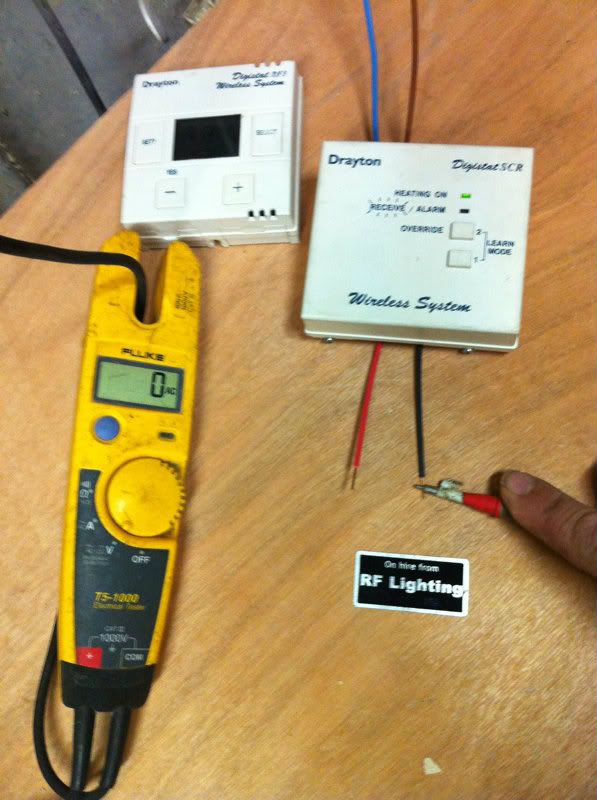Ah. Then they will state "May contain nuts" even if it doesn't
You are using an out of date browser. It may not display this or other websites correctly.
You should upgrade or use an alternative browser.
You should upgrade or use an alternative browser.
Volt Free Contacts
- Thread starter wreck-it-steve
- Start date
No need to apologise - I think you are demonstrating extremely well that the meaning of 'volt free' is anything but as 'obvious' and straighforward as many people have been asserting!John, a voltage drop is one way in which contacts might introduce a potential. Being connected to a source of electrical energy is another. Whether that connection is removable or not adds a complication. Sorry, life isn't always simple.
I still don't fully understand your personal understanding/definition of "volt free". I thought you were saying that it only related to a situation in which the contacts (well, the connection between the contacts) did not introduce a voltage drop. However, you now say (very reasonably) that 'being connected to a source of electrical energy' is another way of not being 'volt free' - yet you didn't seem to have a problem with the contacts (terminals) of a timer being described as "volt free" when one was connected to the supply L via a factory-installed link. Can you understand my confusion? It would be very helpful if you could indicate (in terms which even 'ignorant me' can understand!) what you understand by 'volt free' and 'not volt free'.
Kind Regards, John
Two room stats. One has volt free contacts, and one doesn't. Both connected to a 230V supply to make them work, and nothing else. The other probe of my tester is connected to a good earth.
Standard room stat output terminal:

There's voltage.
Volt free room stat: This requires a cover over the terminals to operate, so I've connected a red and a black wire to the volt free terminals.

Test 1:

Test 2:

Suprise suprise, no voltage, or "volt free" if you like.
Which part of that is soooo difficult for you to comprehend exactly?
Standard room stat output terminal:

There's voltage.
Volt free room stat: This requires a cover over the terminals to operate, so I've connected a red and a black wire to the volt free terminals.

Test 1:

Test 2:

Suprise suprise, no voltage, or "volt free" if you like.
Which part of that is soooo difficult for you to comprehend exactly?
Could that be because you have not connected them (to the CH) yet as were the brown and blue terminals before you connected them.
Connect to CH and disconnect the supply and measure again.
Anticipating your reply that it won't work then -
It may be working now but it's not doing any good.
Connect to CH and disconnect the supply and measure again.
Anticipating your reply that it won't work then -
It may be working now but it's not doing any good.
I don't follow.
The device is powered up and there is no voltage on the contacts exactly as it was designed, because they are volt free contacts.
It really is that simple.
You can then use this device to switch what ever voltage you like. be it ELV or LV of what ever voltage you fancy.
The device is powered up and there is no voltage on the contacts exactly as it was designed, because they are volt free contacts.
It really is that simple.
You can then use this device to switch what ever voltage you like. be it ELV or LV of what ever voltage you fancy.
Two room stats. One has volt free contacts, and one doesn't. Both connected to a 230V supply to make them work, and nothing else. The other probe of my tester is connected to a good earth. .... Suprise suprise, no voltage, or "volt free" if you like. Which part of that is soooo difficult for you to comprehend exactly?
Thanks. First, a clarification if you would - do I take it that it's an optical illusion that makes in appear, in your second pic, that the red output wire is connected to the same place as the incoming (presumably L) brown one?
Then, assuming that is an optical illusion, what you've demonstrated is exactly what I would have expected - not difficult for me to comprehend at all! However, what if, like EFLI's timer, there was a factory-installed connection between the places to which you've connected your brown and red wires - such that your meter would, hopefully, show a voltage on the red wire. Would you, like EFLI apparently does, still consider that to be a "volt free" terminal?
Kind Regards, John
We all know how it works.You can then use this device to switch what ever voltage you like. be it ELV or LV of what ever voltage you fancy.
The argument is that it is a very poor term to use for something which, when in use, is NOT 'volt free'.
The blue and brown go under the stat base and connect to the bottom of screws 1 and 2 respectively.
The contacts EFLI refers to are still volt free contacts, and the only thing making them not volt free is that link.
For the sake of pedantry (suprising that pedantry gets mentioned on yet another multi page johnw2 thread ) I suppose the link should not be pre installed if the timer is sold as having volt free contacts, but the reality is that it's exactly the same as my room stat would be if I fitted a link between terminals 1 and 3 on my room stat.
) I suppose the link should not be pre installed if the timer is sold as having volt free contacts, but the reality is that it's exactly the same as my room stat would be if I fitted a link between terminals 1 and 3 on my room stat.
It still has volt free contacts as you already understand, it's just that I've chosen to feed them with a particular voltage.
The contacts EFLI refers to are still volt free contacts, and the only thing making them not volt free is that link.
For the sake of pedantry (suprising that pedantry gets mentioned on yet another multi page johnw2 thread
It still has volt free contacts as you already understand, it's just that I've chosen to feed them with a particular voltage.
I was only pointing out that that is how it is described on the instructionsWould you, like EFLI apparently does, still consider that to be a "volt free" terminal?
despite having the link pre-installed.
Fair enough. My apologies for thinking that you agreed with that description, if you don't!I was only pointing out that that is how it is described on the instructions despite having the link pre-installed.Would you, like EFLI apparently does, still consider that to be a "volt free" terminal?
Kind Regards, John
Quite - as you say, that link makes them 'not'.The contacts EFLI refers to are still volt free contacts, and the only thing making them not volt free is that link.
I've already suggested that maybe people regard the distinction (between volt-free and non-volt-free) as relating to whether or not the link (if factory-installed) is user-removable, but that suggestion didn't go down too well, either!For the sake of pedantry (suprising that pedantry gets mentioned on yet another multi page johnw2 thread) I suppose the link should not be pre installed if the timer is sold as having volt free contacts ....
As I see it, in reality (as per your first pic), the "non volt-free" ones will not normally make the 'feed' contact user-accessible - so, although there must be a conductor (c.f. 'link') between it ad the supply L, it is not 'a link' which is user-removable (at least, without undertaking some significant 'tampering' with the equipment).
Kind Regards, John
A normal mains fed room stat always outputs 230V when it is on. That is all it can do. You can not use it on a boiler with ELV control for example.
A stat with volt free contacts does not output any voltage from it's output terminal when it is on, unless you feed a voltage (any voltage) into it's switching supply terminal.
I've highlighted the important bits, but I'm sure you'll think of something else to keep this thread dragging on and on...
A stat with volt free contacts does not output any voltage from it's output terminal when it is on, unless you feed a voltage (any voltage) into it's switching supply terminal.
I've highlighted the important bits, but I'm sure you'll think of something else to keep this thread dragging on and on...
That's what I've always believed - complications have arisen during this discussion.A normal mains fed room stat always outputs 230V when it is on. That is all it can do. You can not use it on a boiler with ELV control for example.
A stat with volt free contacts does not output any voltage from it's output terminal when it is on, unless you feed a voltage (any voltage) into it's switching supply terminal.
I've highlighted the important bits, but I'm sure you'll think of something else to keep this thread dragging on and on...
As I said before, the real difference seems to be that, with the former, one is not usually provided with any access to one of the contacts, nor to an easy means of disconnecting its internal connection/'link' to the 230v L - otherwise there would be no difference between the two, except perhaps for a link which the user can install or not (or keep/remove, if pre-installed), as desired.
stillp has rather confused things by suggesting that, were it a semiconductor switch, it could not be 'volt free' because it introduces a voltage drop. I personally think that's probably wrong and that it is just as valid to describe a semiconductor switch as 'volt free' if there is no voltage on its terminals when no voltage is applied to either of them (i.e. per you red bits above).
Kind Regards, John
Agreed.
Thread finished. Hoorah!
Thread finished. Hoorah!
It could have finished long ago! Apart, perhaps, from the business of the unit with a factory-fitted link, I never had any doubts about my understanding of the sense in which the electrical industry/trade uses the phrase 'volt free'. However, nothing will change my belief that it is ill-chosen terminology, and all I sought to do, back on page 1, was state my view about that! Everything else in the thread had resulted from the way in which others chose to respond/contribute!Agreed. Thread finished. Hoorah!
It always amuses me that most of those who regularly moan or comment about lengthy threads involving myslef are those who chose to be fairly significant contributors to those threads
Kind Regards, John
DIYnot Local
Staff member
If you need to find a tradesperson to get your job done, please try our local search below, or if you are doing it yourself you can find suppliers local to you.
Select the supplier or trade you require, enter your location to begin your search.
Please select a service and enter a location to continue...
Are you a trade or supplier? You can create your listing free at DIYnot Local
Similar threads
- Replies
- 6
- Views
- 1K
- Replies
- 16
- Views
- 3K

